Wimbledon Lawn Tennis Museum

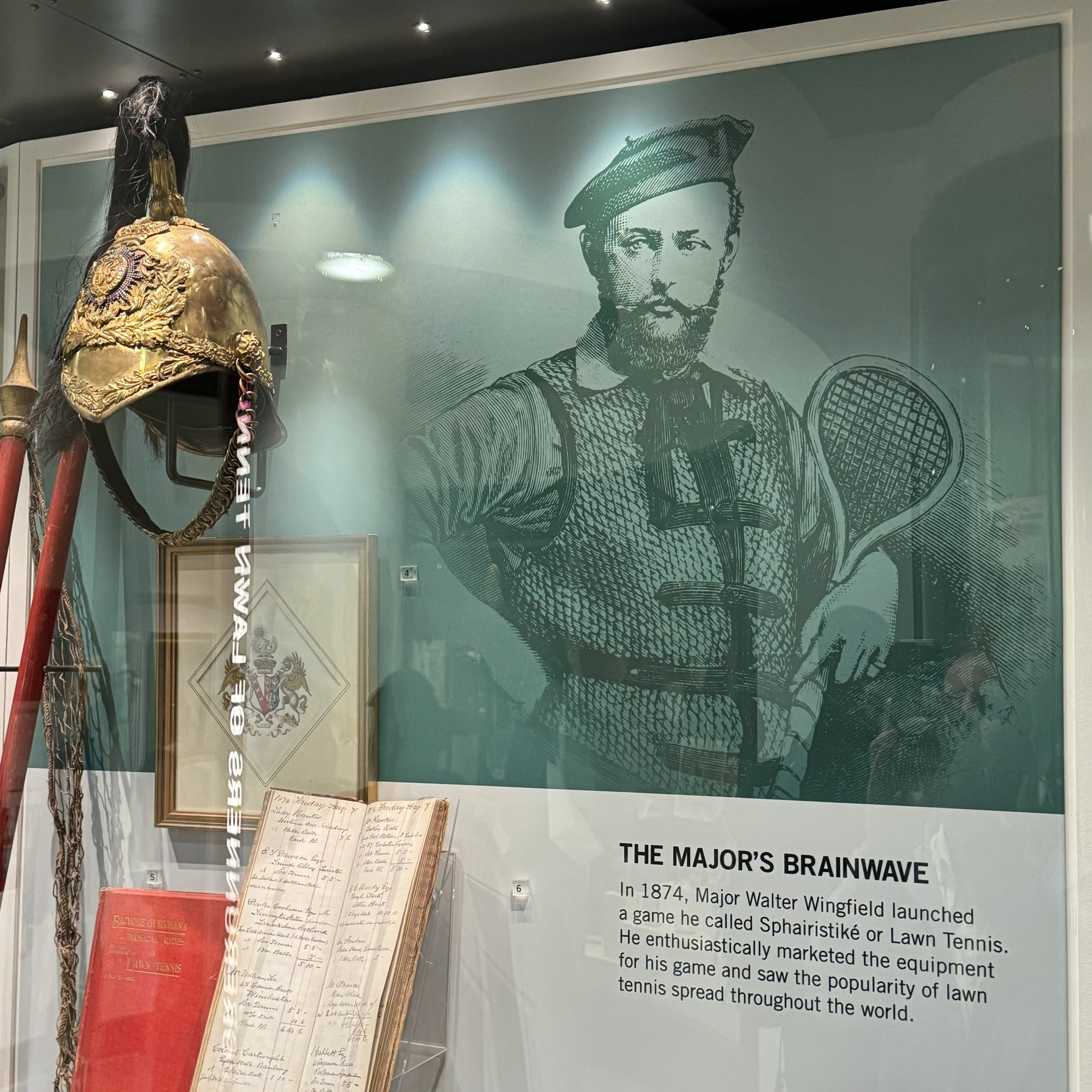

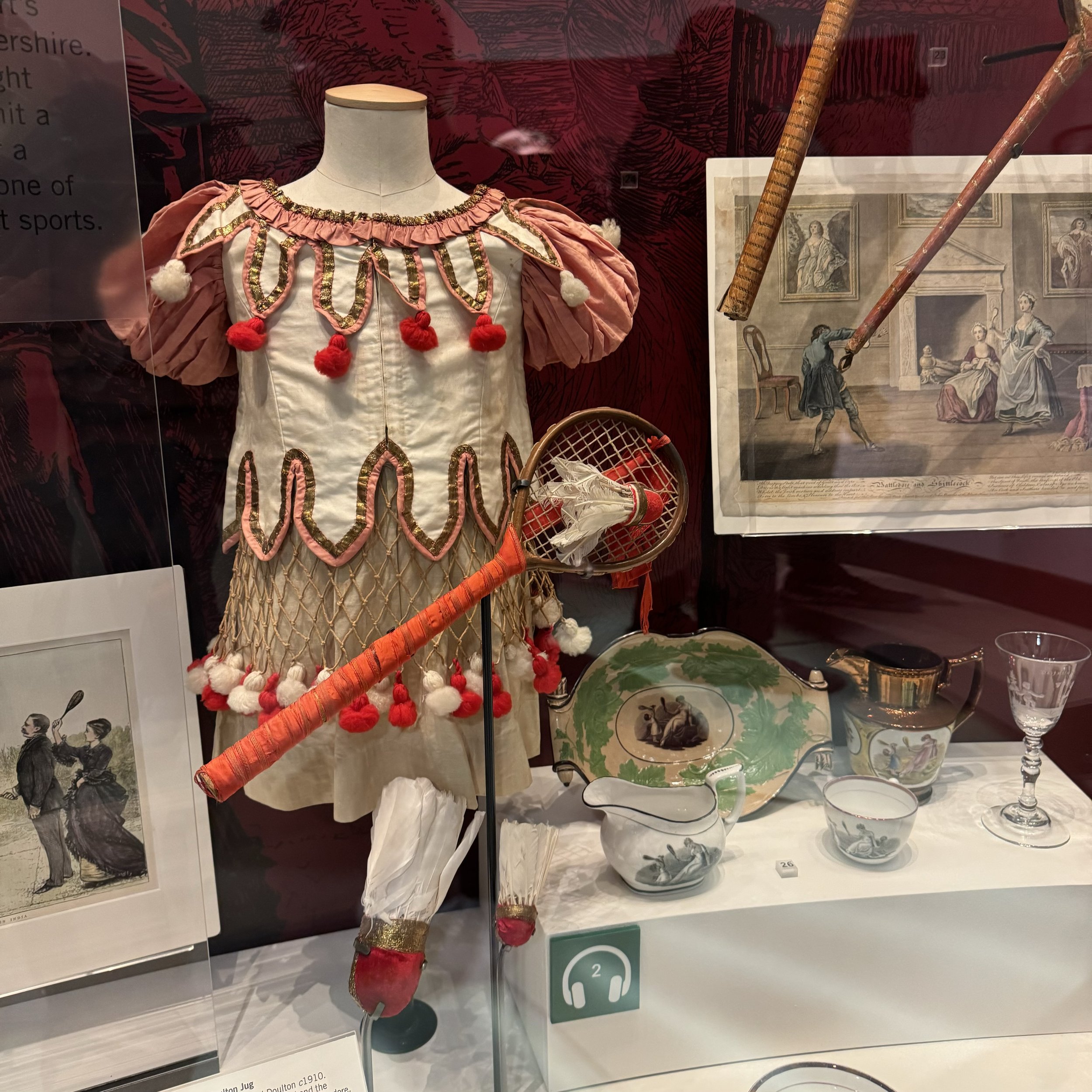


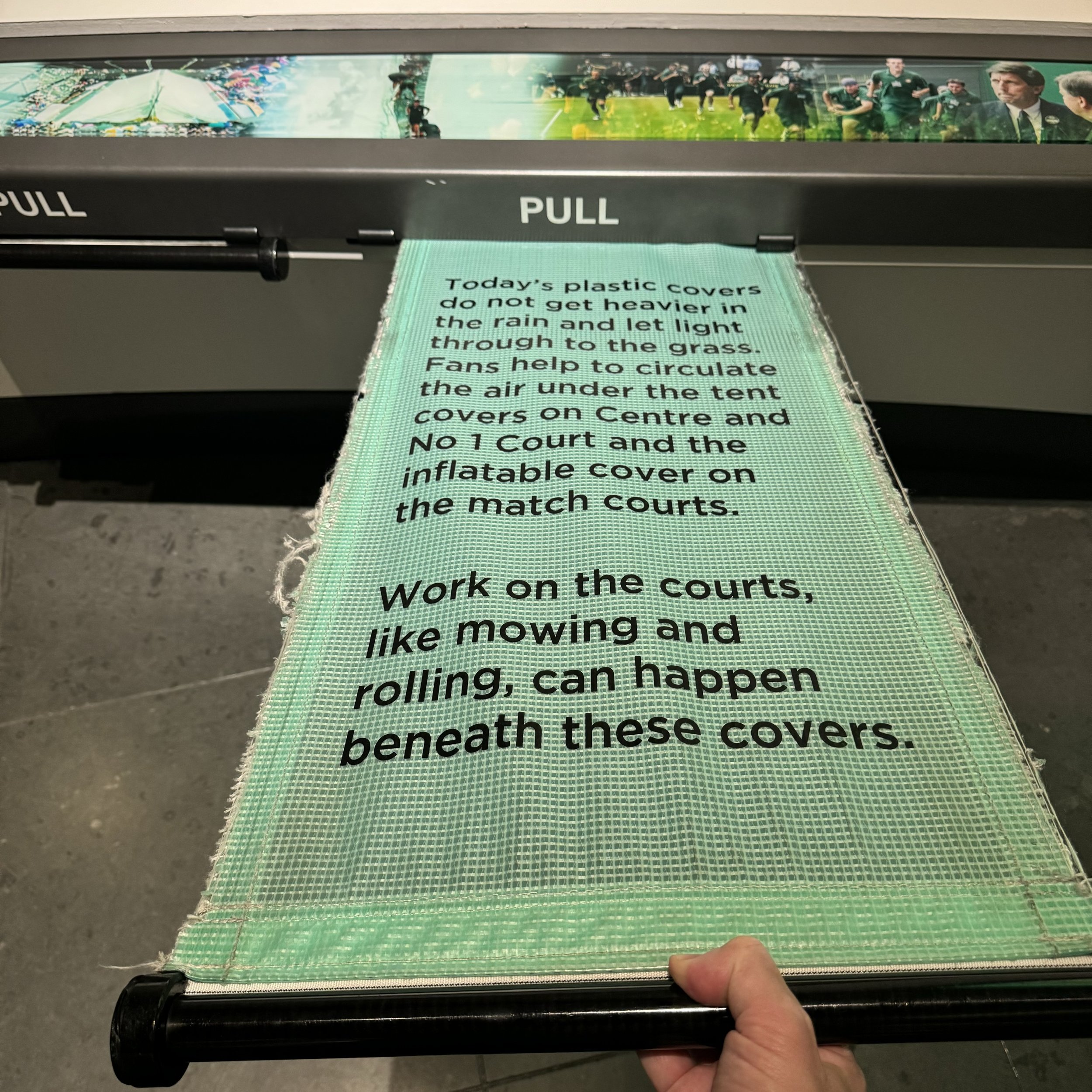

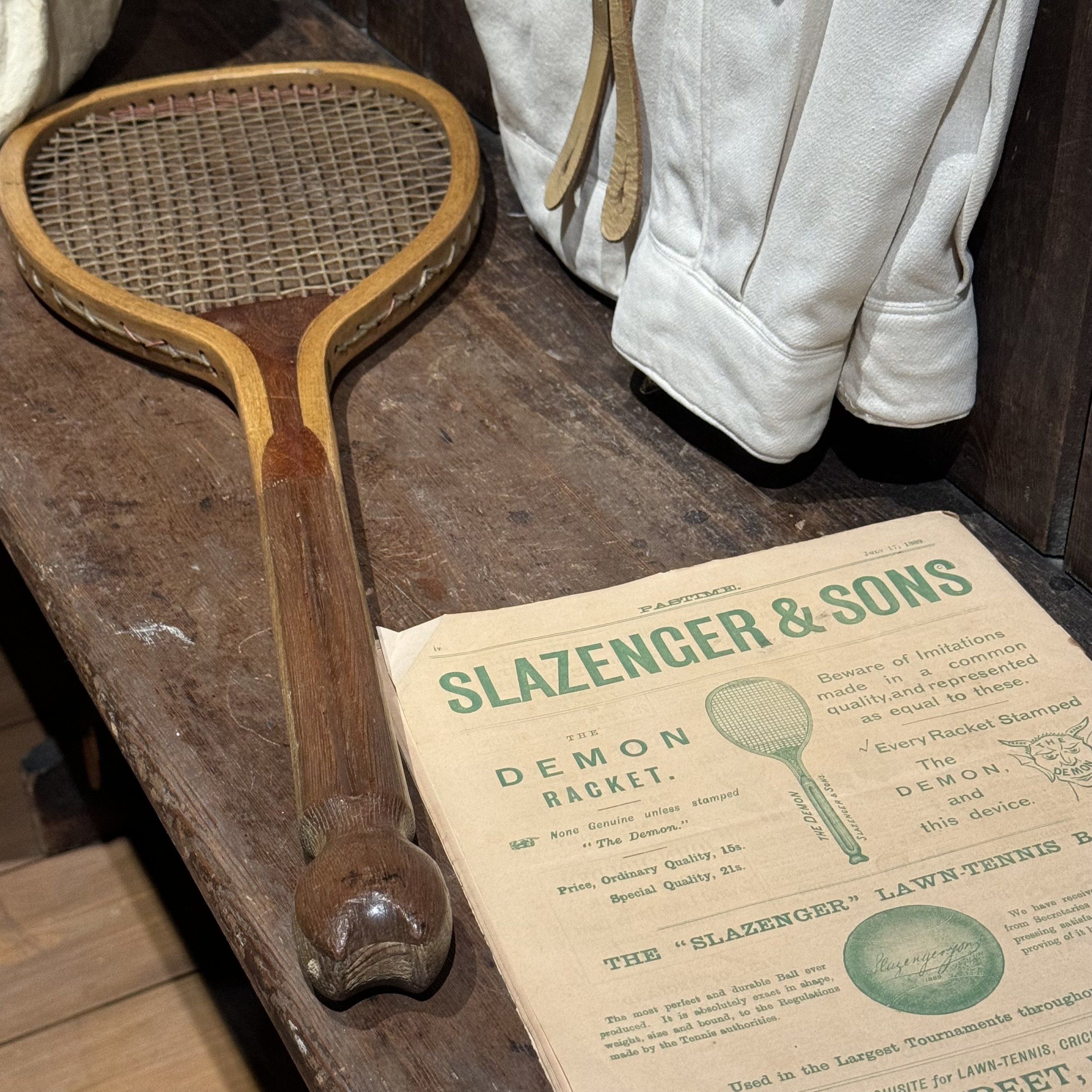
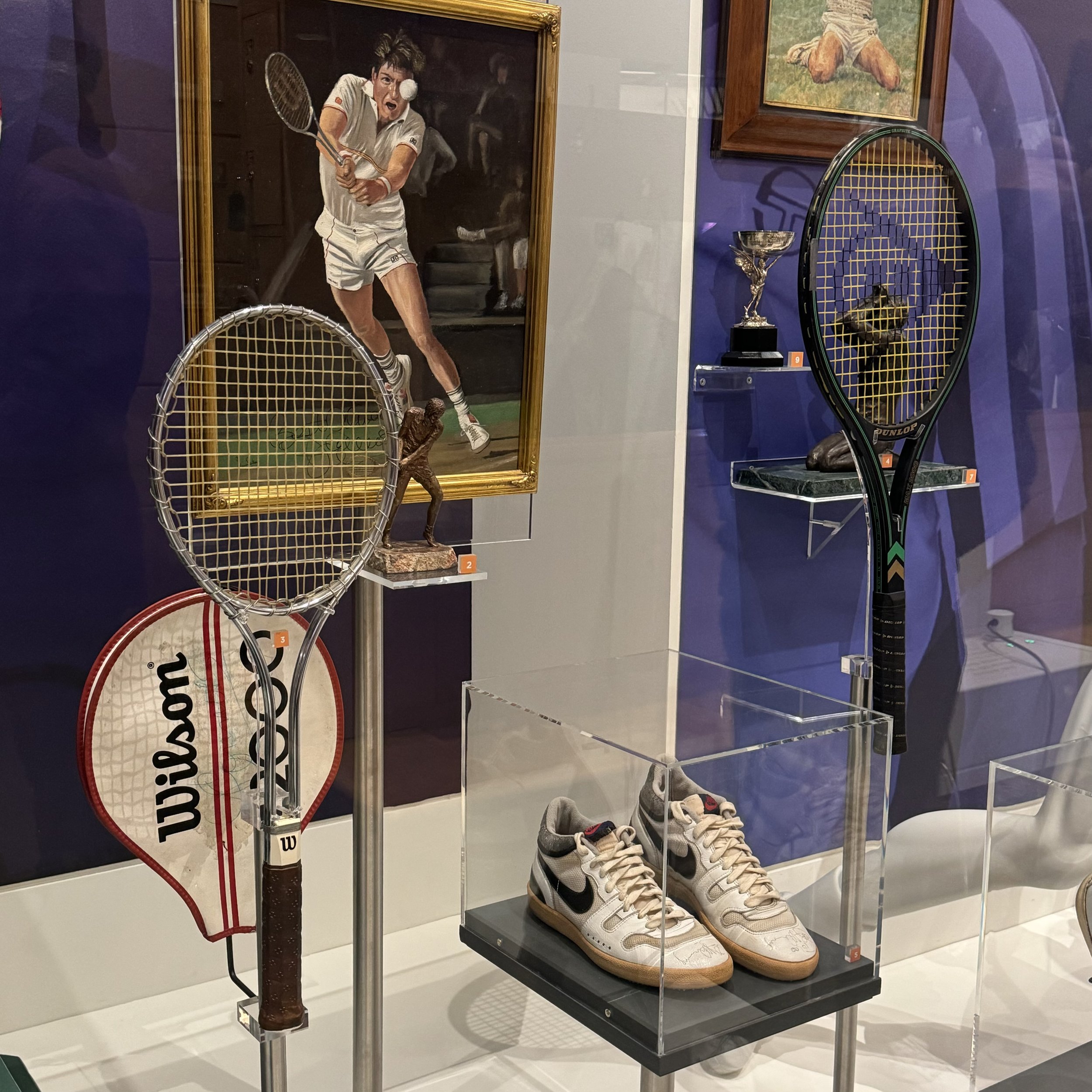
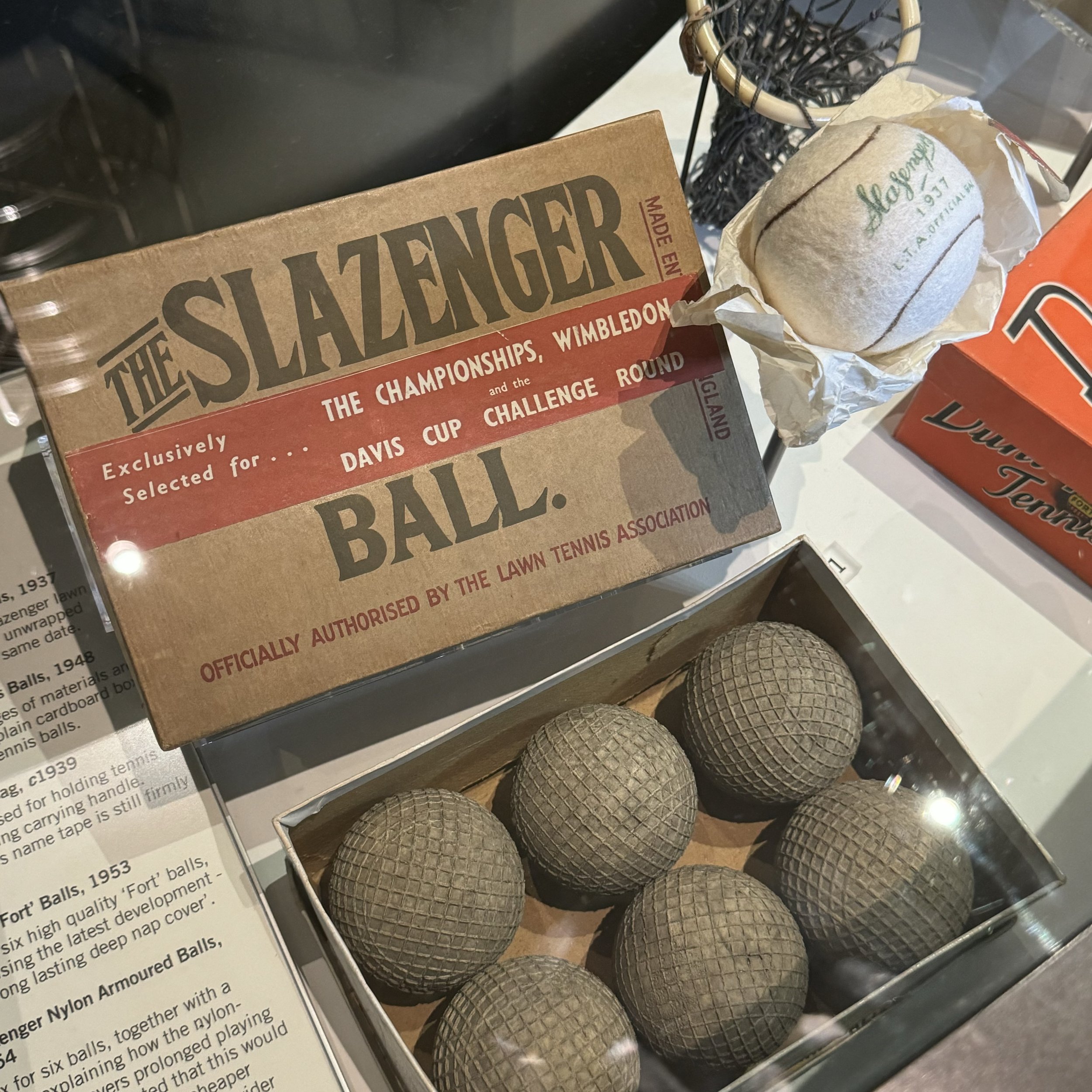
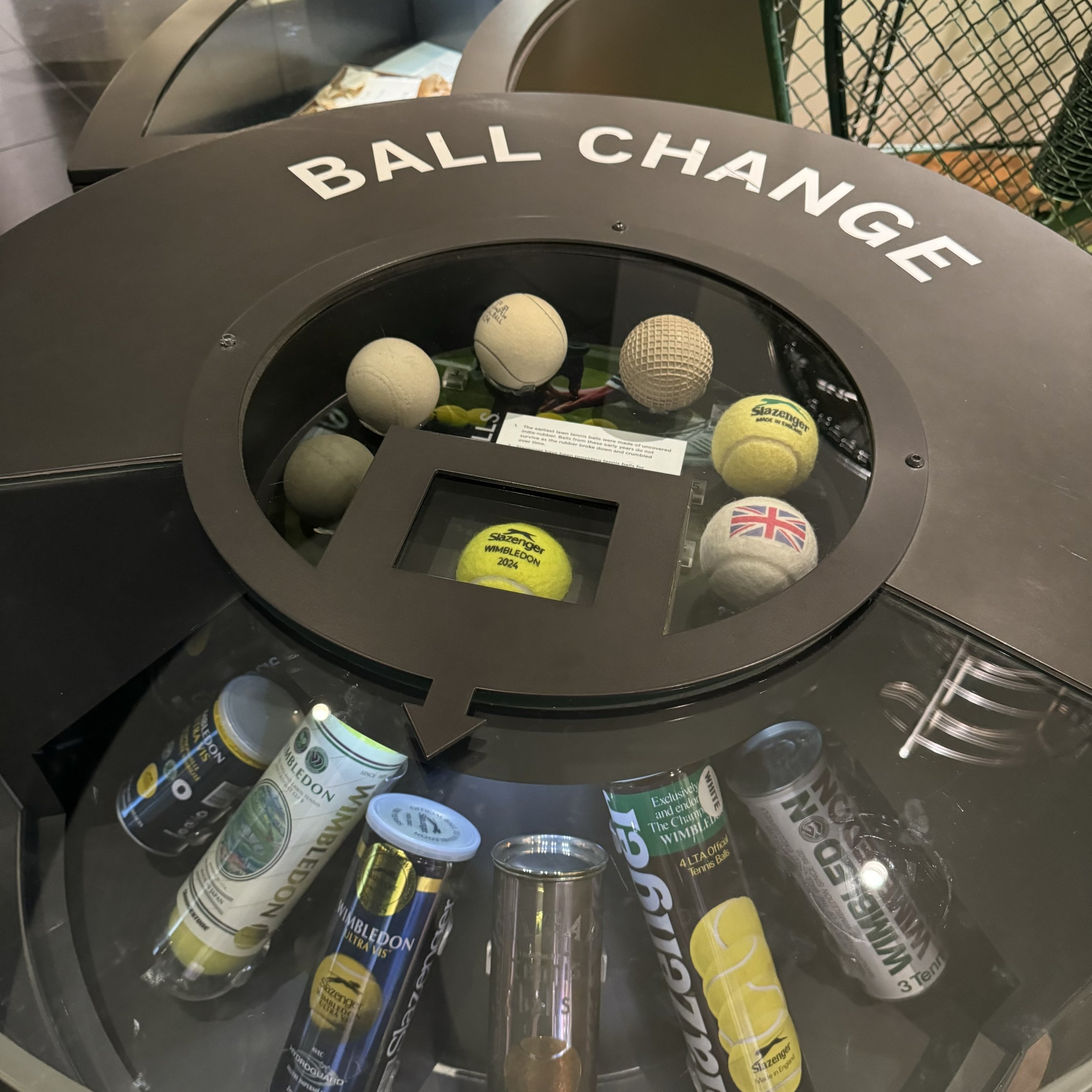
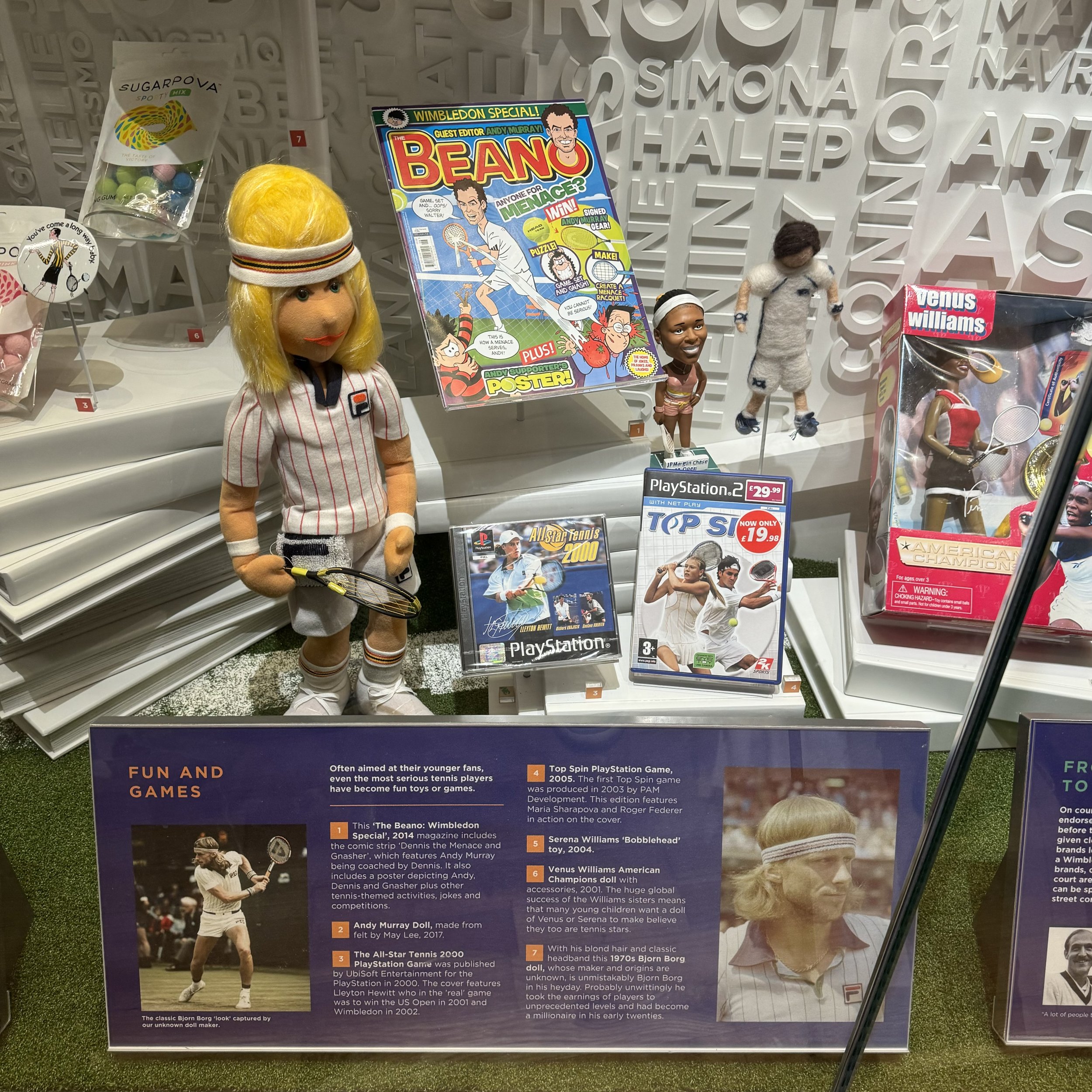
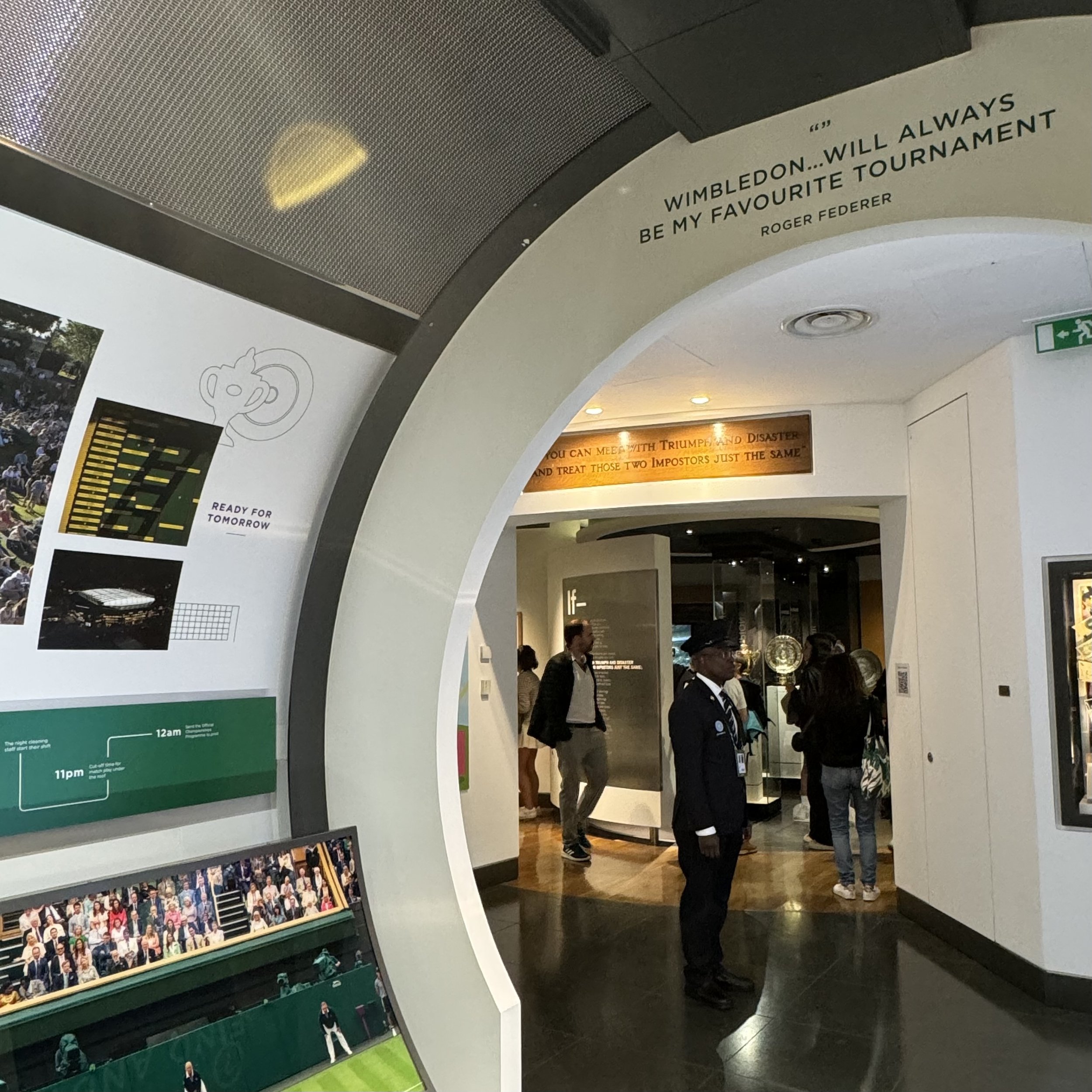
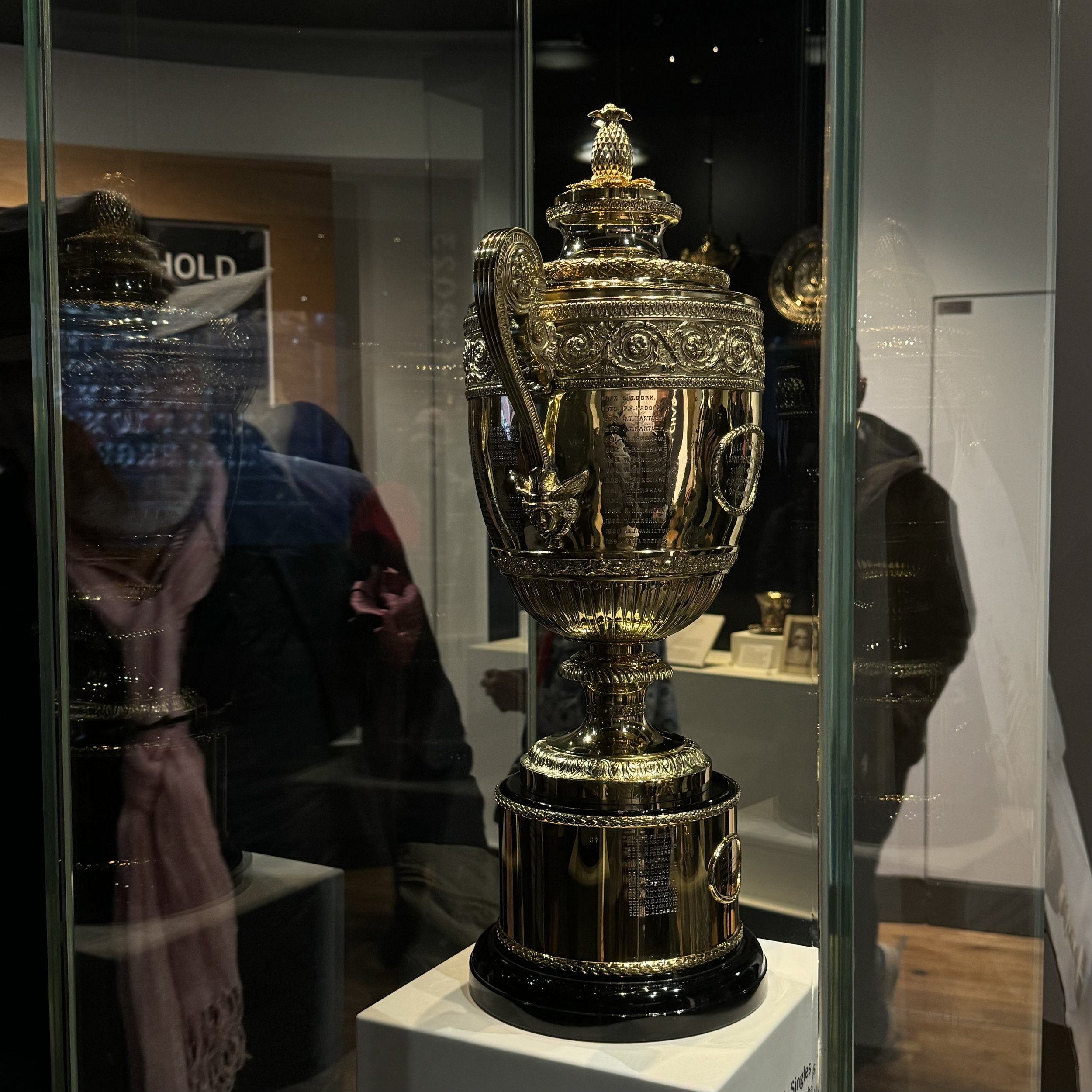
The modern game of tennis dates to 1874 and was created by a British Army officer named Major Walter Clopton Wingfield. That might explain why the entrance to the largest tennis museum in the world describes the stereotypically genteel upper class pastime as a violent sport, with multiple wall quotes referring to racquets as weapons. It’s both an over the top analogy and a perfectly appropriate one for a sport that has produced some of the fiercest, non-contact one-on-one competitors the world has ever known.
The game’s not so humble origins, however, began as a royal pastime much further back in history. A visit to the museum will explain how mid-1500s wooden rackets strung with animal gut and barely bounceable balls of wool evolved into the hi-tech, feather light, fast paced game we watch today. Presented chronologically, artefacts from a collection of over 35,000 objects include early racquets that look like lacrosse sticks, tennis themed Victorian home decorations and the order of play poster from the first Lawn Tennis Championship in 1877. It’s a fascinating look back, but much like the game itself the pace and energy of this museum picks up significantly once it approaches the modern era.
With photos that prove excessive queueing in England has always been a thing, the displays become strangely familiar once the museum trail gets to the 1900s. The evolution of how tennis products were branded and marketed is given just as much prominence as the lineage of the tech as well-known names like Slazenger and Wilson begin to appear, except they’re accompanied by odd colours and unfamiliar logos. But it’s not just the players and equipment that get all the attention. There are interactive explanations that demonstrate the challenges faced by the groundsmen and umpires as well. But to truly understand the changes in any sport, you need to study the fashion.
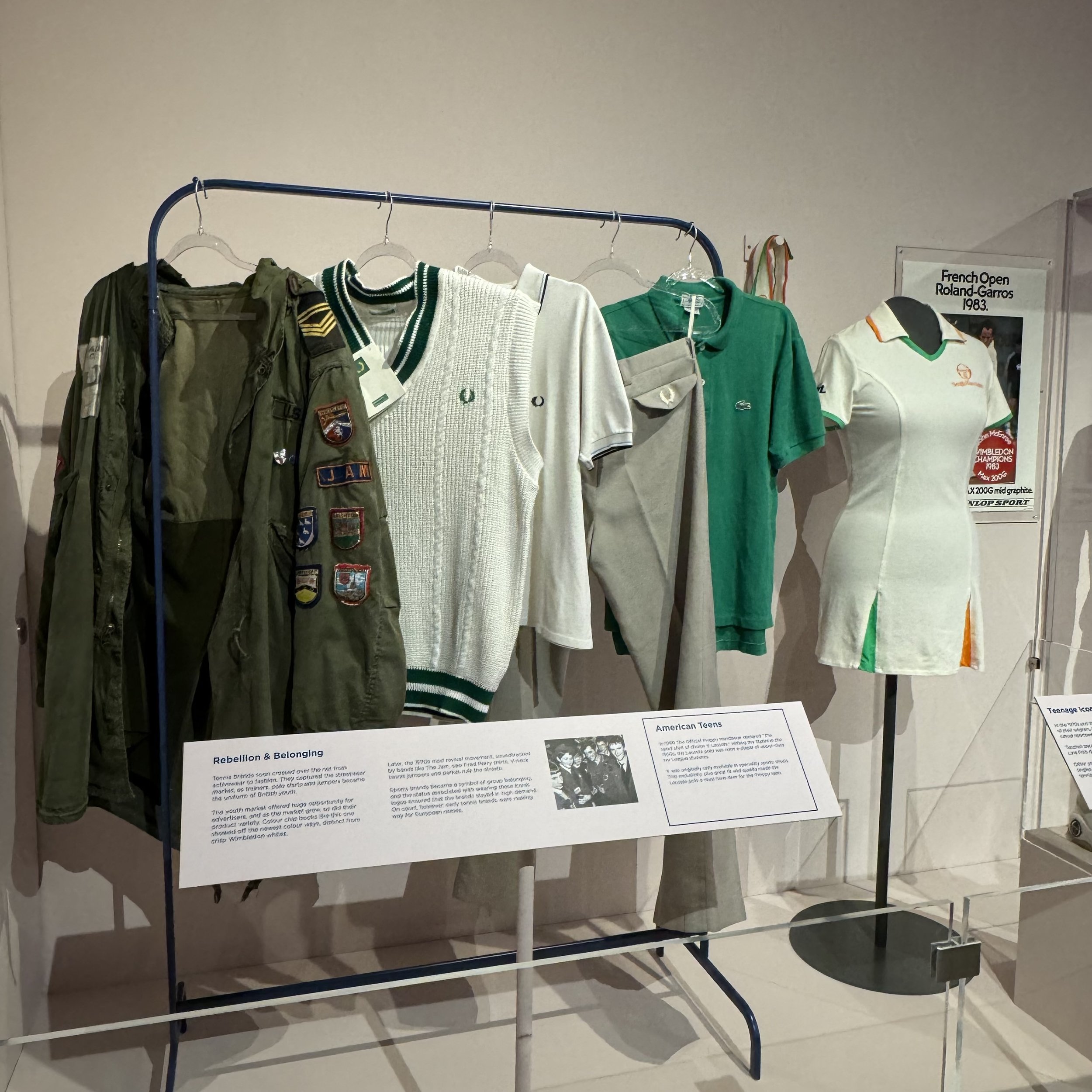

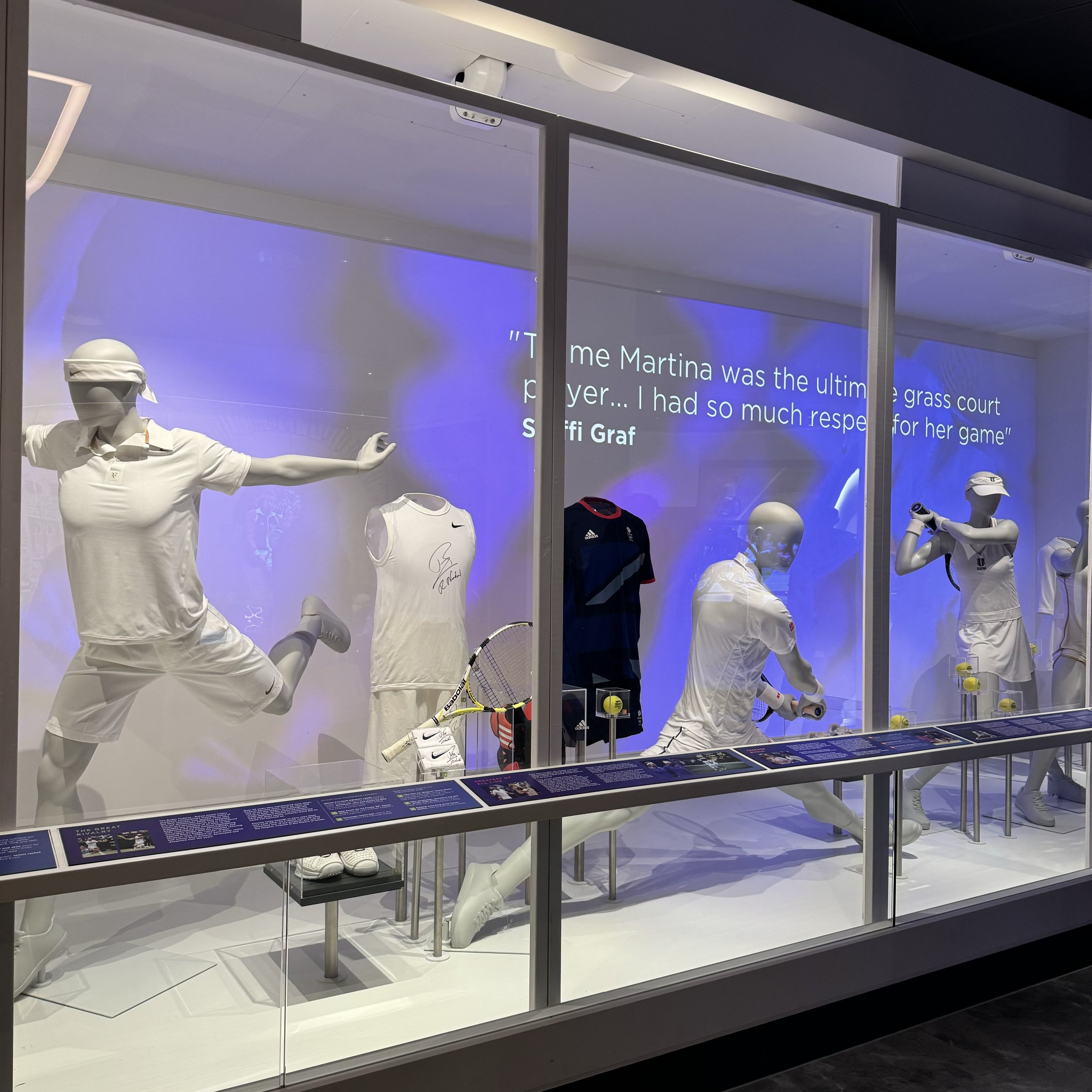


From Gorgeous Gussie’s knickers to Coco Gauff’s signature CG1 shoe, a significant portion of the museum is dedicated to the evolution of wearable kit. I visited on a crowded Wimbledon middle Sunday and watched as different age visitors were drawn to the various eras of clothing that corresponded to their childhood tennis heroes. From stripey 70s headbands to flashy modern spandex, it’s astounding to see just how much tennis whites have changed in the last few decades. One thing that’s stayed the same, however, is the desire of tennis legends to have their own brand. From Fred Perry’s laurel wreath to Andy Murray’s AMC wings you’ll appreciate how much impact a recognisable logo can have on a plain white shirt.
The museum is filled with interactive displays, seasonal presentations, extensive examples of sponsorship that include breakfast cereal, video games, toys and figurines, and plenty of history and fun facts. I now know how many tennis balls could fit into Centre Court with the roof closed, but my personal highlight was the ability to see the actual Mens Challenge Cup and Ladies Rosewater Dish. It’s hard to read the tiny names of champions etched into these hallowed awards since they’re presented behind safety glass and under bright glaring lights, but it’s awe inspiring to see them in person after watching so many victors raise these high above their heads and then clasp them close to their chest after winning a final.
Entry is free for attendees during the annual two-week championships and you’d be committing a double fault if you had Wimbledon tickets but gave this a miss. It’s open to the general public during the rest of the year via pre-booked tickets.
Plan your visit
Wimbledon Lawn Tennis Museum is located at 3 Church Rd, London SW19 5AG, within the Wimbledon grounds.
Nearest Tube stations: Southfields and Wimbledon park (District Line)
Open year-round to the public except during The Championships weeks where entry is available to tournament ticket holders only.
Prices from £15 Adult / £10 children 5-15 / discounts available.
Visit the official webpage to confirm opening days/times and to book a visit and/or tour.
Visit wimbledon.com and follow @WimbledonMuseum on Instagram for more info about the venue
PLUS…
Check the What’s On page so you don’t miss any other great shows closing soon.
Subscribe to the Weekly Newsletter. (It’s FREE!)
